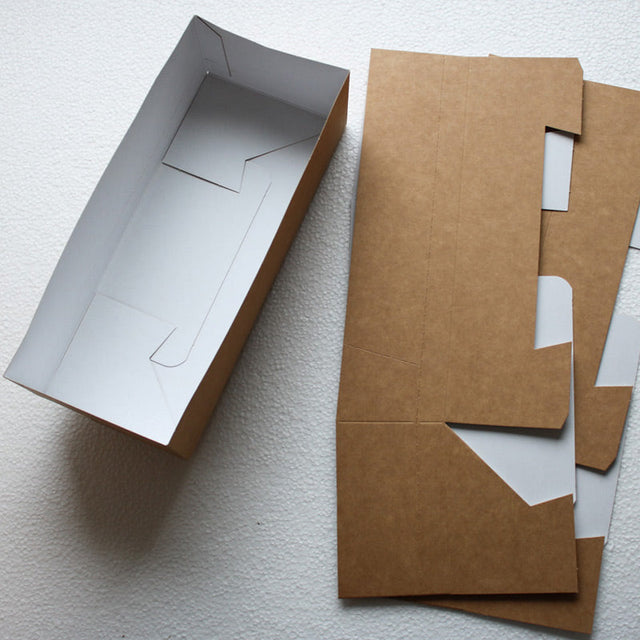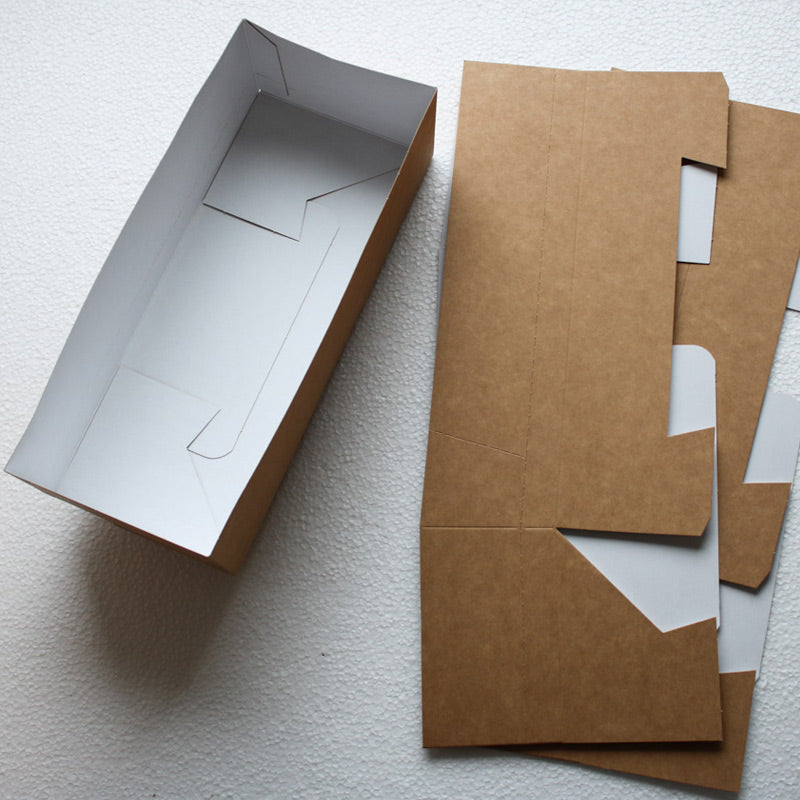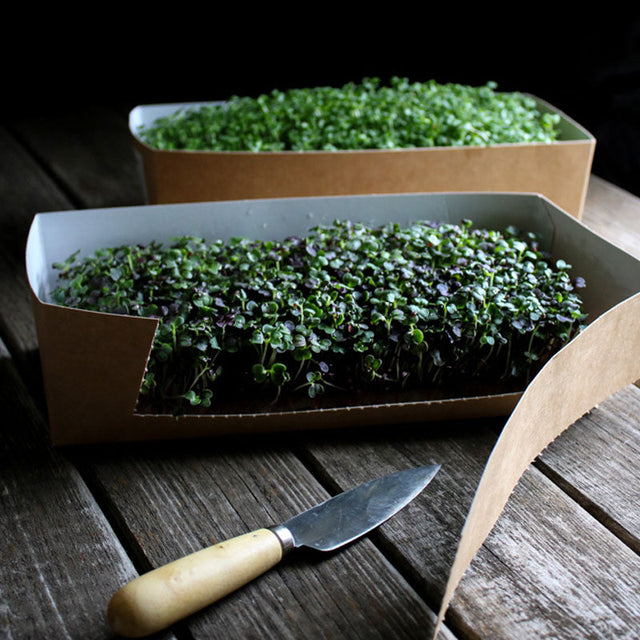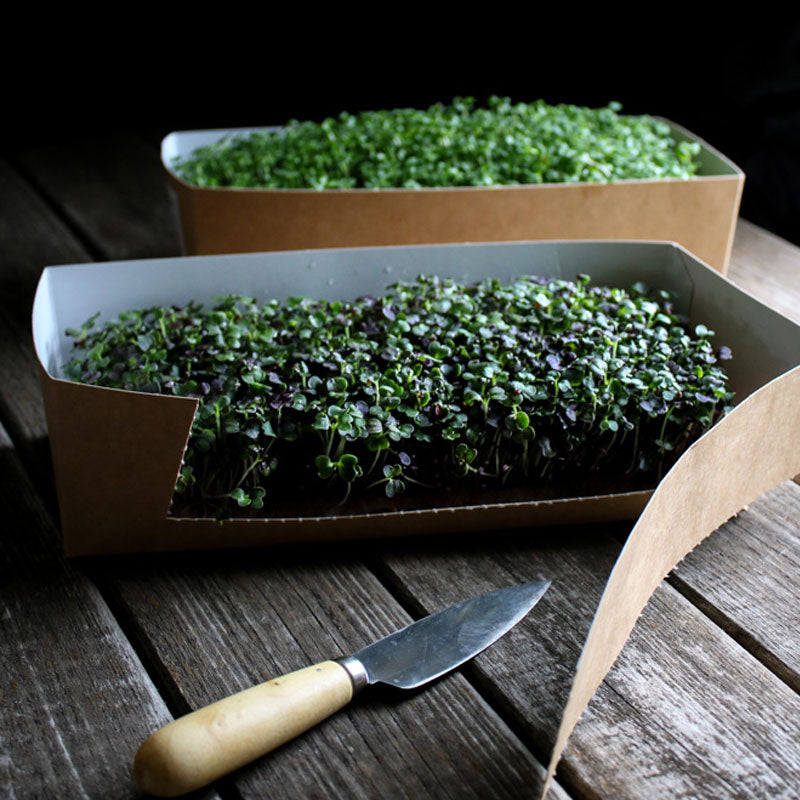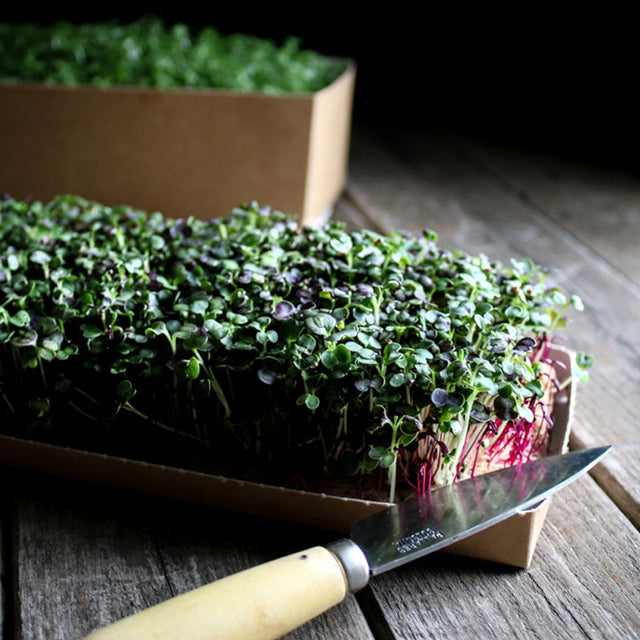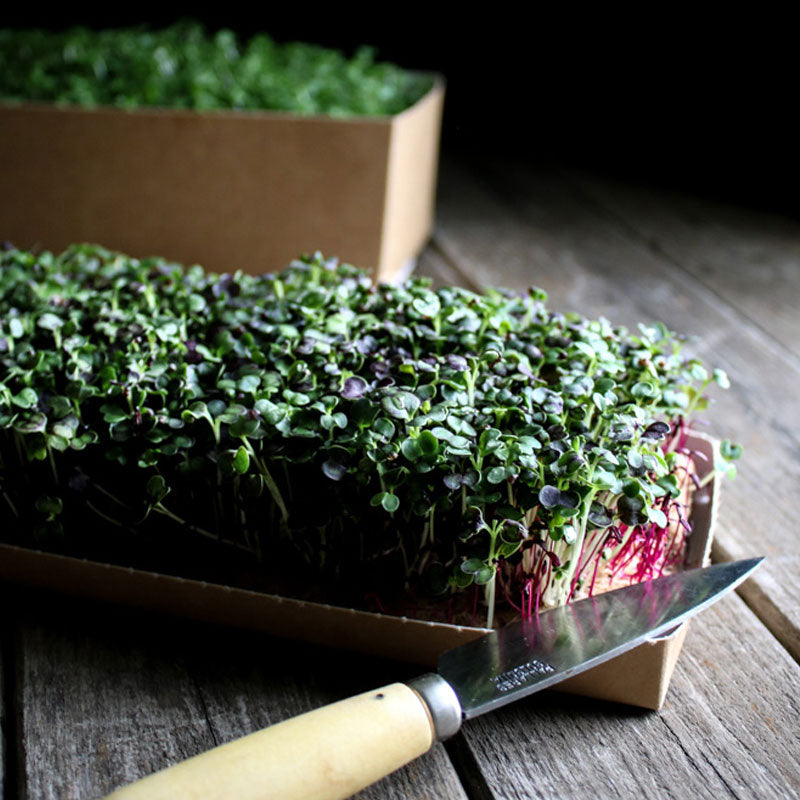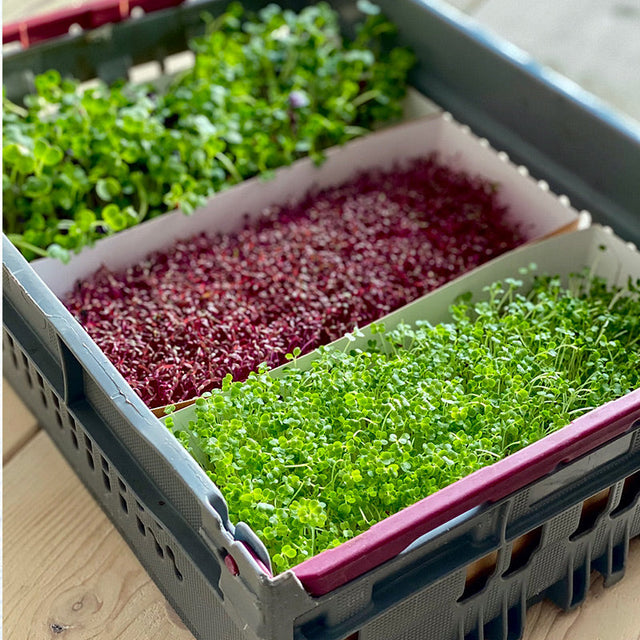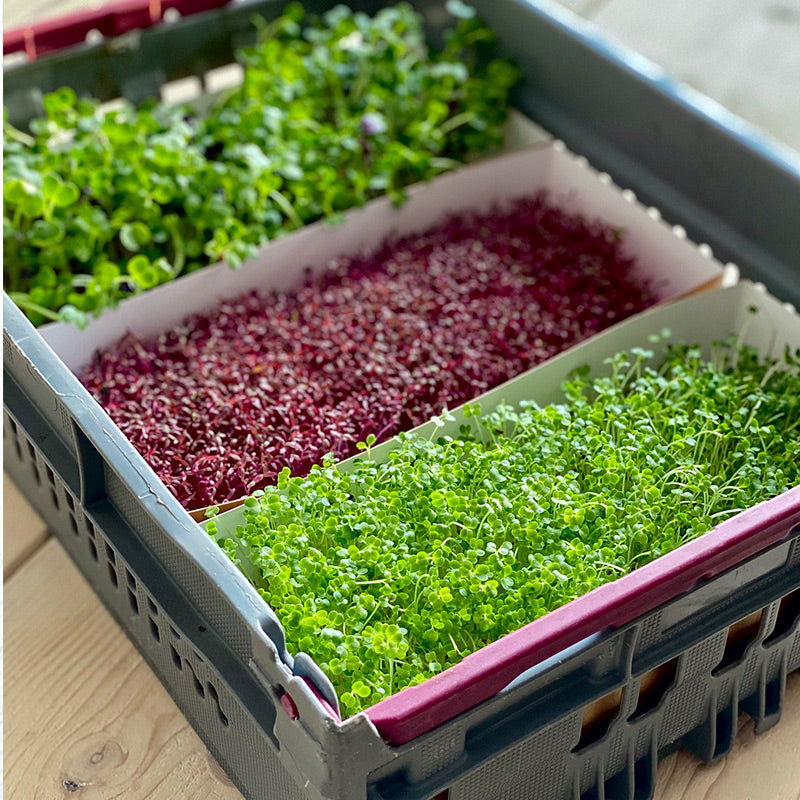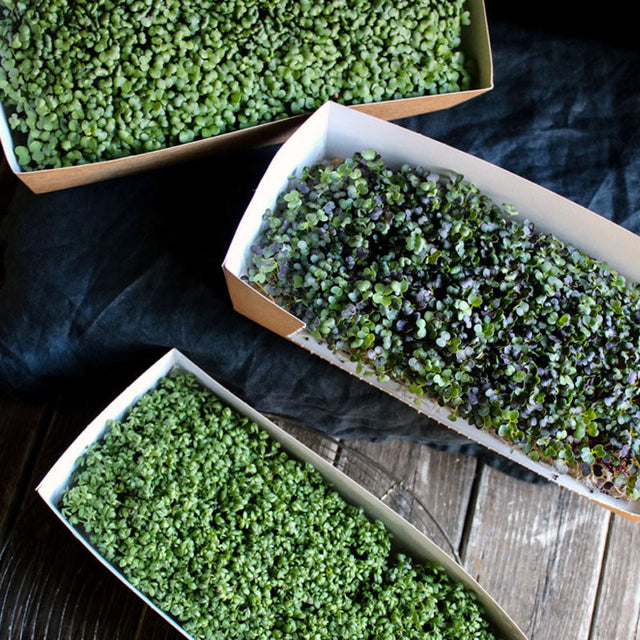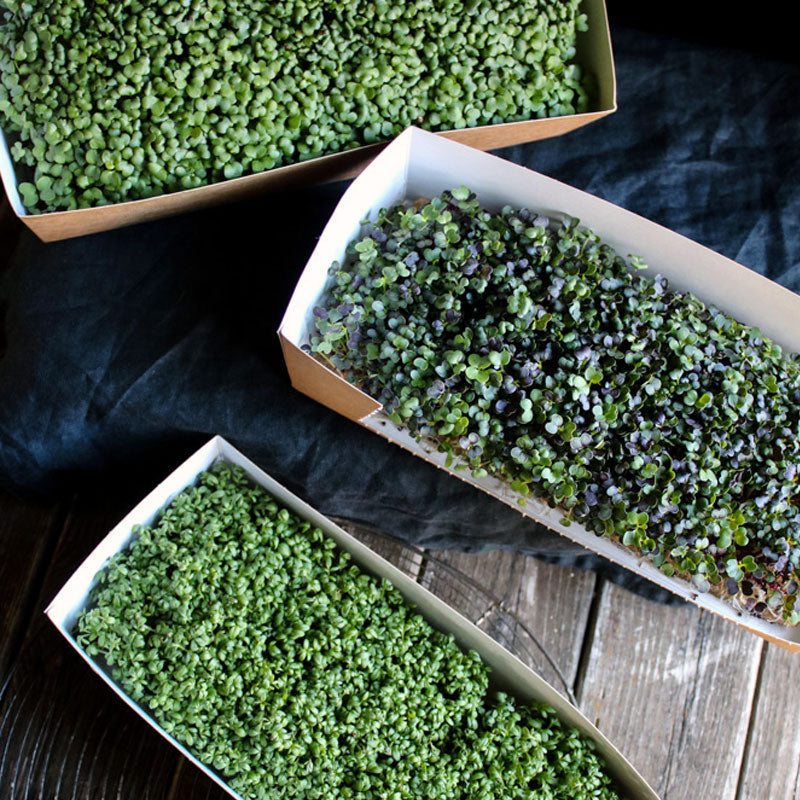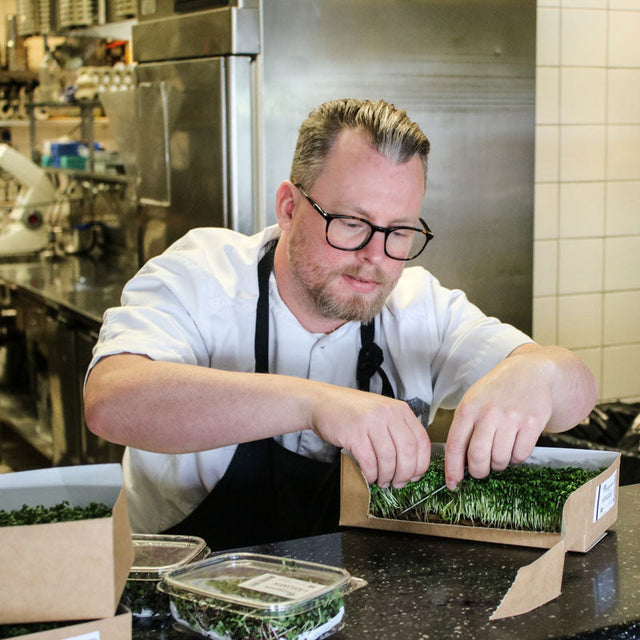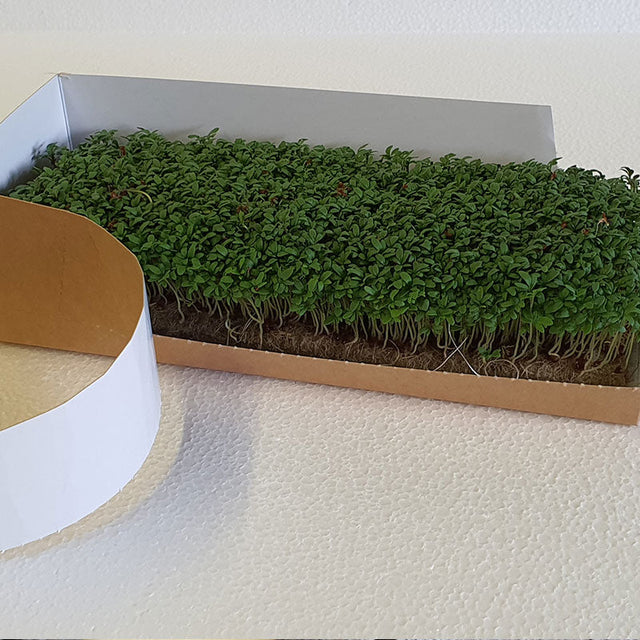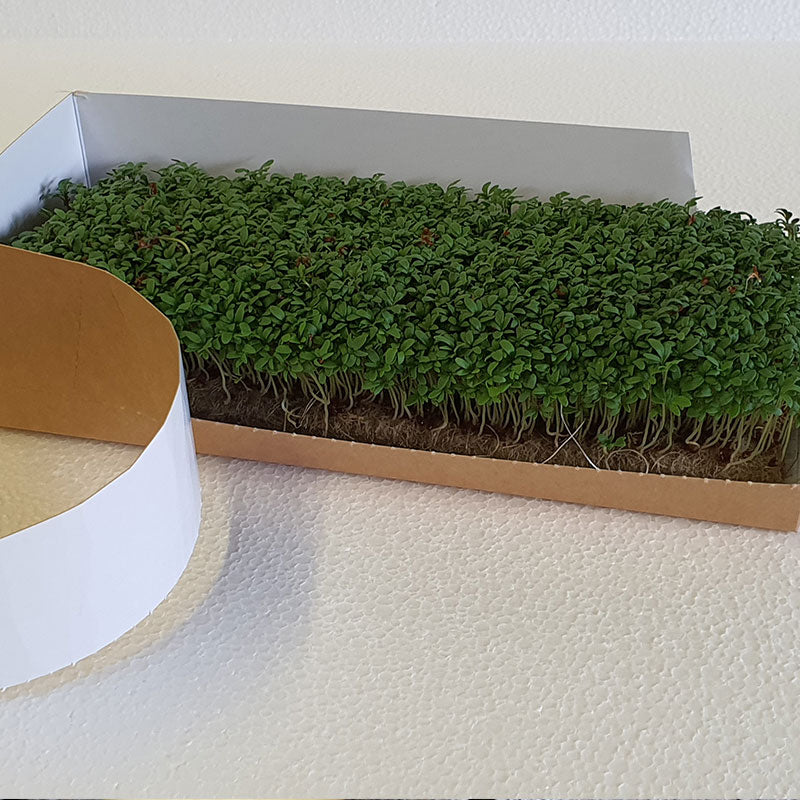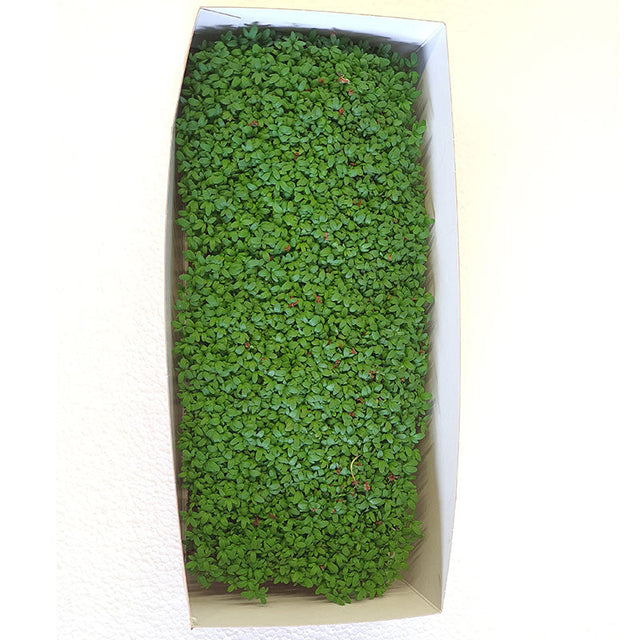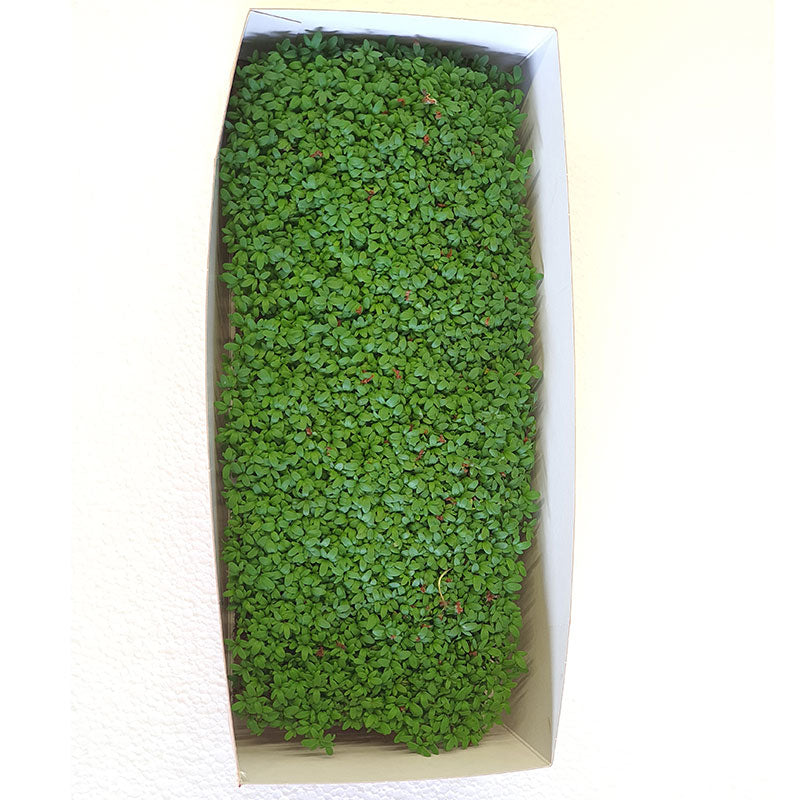Packaging - Restaurant Carton for live microgreens
Packaging - Restaurant Carton for live microgreens - 20 is backordered and will ship as soon as it is back in stock.
Carton packaging for live microgreens.
The size of the package is 270/260 x113/108x 70 (Length Top/Bot x Width Top/bot and height).
Make sure not the pack the microgreens when they are to wet!
Carton packaging and plastic packaging each have their own set of advantages and considerations, which can vary depending on factors like environmental impact, durability, recyclability, and suitability for different types of products. Here's a comparison between carton packaging and plastic packaging:
Carton Packaging:
-
Environmental Impact:
- Advantages: Carton packaging is often considered more environmentally friendly than plastic because it is generally biodegradable and recyclable. It can be made from renewable resources such as paperboard or cardboard, which are derived from wood fibers.
- Considerations: The environmental impact can vary based on factors like the source of the materials (virgin vs. recycled fibers) and the recycling infrastructure in different regions.
-
Recyclability:
- Advantages: Cartons are widely recyclable, and many municipalities accept them in curbside recycling programs. They can be recycled into new paper products or composted if they are made from biodegradable materials.
- Considerations: Some cartons have coatings or laminations that can affect recyclability, so sorting and processing capabilities may vary.
-
Product Protection:
- Advantages: Carton packaging can provide good protection for products against light, moisture, and mechanical damage. It can be engineered for specific product requirements, such as providing barriers against oxygen or UV light.
- Considerations: Cartons may not be as durable as certain types of plastic, particularly in harsh environments or for products requiring extensive handling or transportation.
-
Perception and Marketing:
- Advantages: Cartons are often perceived as more natural or eco-friendly by consumers, which can enhance the product's market appeal, especially in segments emphasizing sustainability.
- Considerations: Packaging design and functionality can impact consumer perception and usability, affecting brand image and customer satisfaction.
Plastic Packaging:
-
Durability and Protection:
- Advantages: Plastic packaging is durable and provides excellent protection against moisture, chemicals, and physical impact. It can be lightweight yet strong, making it suitable for various types of products.
- Considerations: Certain plastics may not biodegrade easily and can persist in the environment, posing environmental challenges if not properly managed through recycling or waste disposal.
-
Recyclability:
- Advantages: Some types of plastic, such as PET (polyethylene terephthalate) and HDPE (high-density polyethylene), are highly recyclable and can be used to produce new plastic products.
- Considerations: Plastic recycling rates vary widely, and some types of plastic (e.g., mixed plastics, certain additives) may pose challenges in terms of sorting, processing, and market demand for recycled materials.
-
Versatility and Functionality:
- Advantages: Plastic packaging offers versatility in terms of shapes, sizes, and functionalities. It can be molded or formed into complex designs to meet specific product and marketing needs.
- Considerations: The versatility of plastic can lead to overuse or excessive packaging in some cases, which contributes to waste generation and environmental concerns.
-
Cost and Efficiency:
- Advantages: Plastic packaging is often cost-effective to produce and transport due to its lightweight nature. It can also extend shelf life for perishable products, reducing food waste.
- Considerations: Economic considerations should be balanced with environmental impacts and long-term sustainability goals.
In conclusion, the choice between carton packaging and plastic packaging involves weighing factors such as environmental impact, recyclability, product protection, consumer perception, and cost-efficiency. Both types of packaging have their advantages and considerations, and the optimal choice may depend on specific product requirements, market expectations, and sustainability goals of the manufacturer and consumers.

